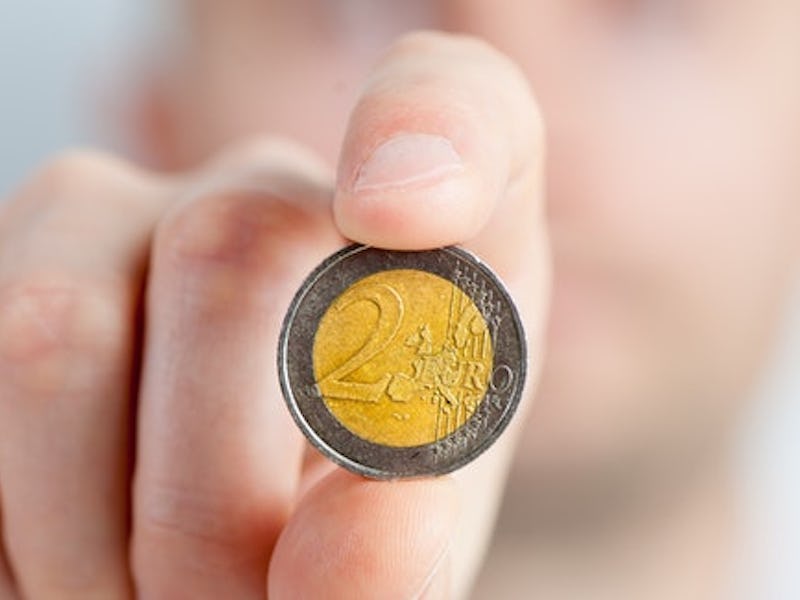How to Hack the Bottom Dollar Effect to Get the Most Out of a Big Purchase
Here's how to keep this phenomenon from ruining your next big purchase.

I recently spent a lot of time scrolling through Trek Madone SLRs online — the elite racing bicycle of my dreams. That bike would essentially clean out my bank account if I was crazy enough to “add to cart.” But for just a second my finger hovered over the buy button. What if I were to throw caution to the wind and buy that sweet carbon machine?
A concept in behavioral science suggests that the enjoyment I would have gained from that purchase would be indelibly tainted with regret. As Robin Soster, the associate dean of the Breech School of Business at Drury University, tells me, when we spend the very last of our cash or splurge in a way that pushes the budget into the danger zone, it makes us enjoy that coveted object significantly less.
“Only have $5 left on a Starbucks gift card? That could be a situation in which your latte would taste less sweet,” Soster says.
The Madone SLR is an extreme example of what Soster calls the “bottom dollar effect.” But fortunately, the very person who defined it also has tips for how to hack it and use it to our advantage.
This article first appeared in the Inverse Strategy newsletter. Sign up for free to receive actionable tips to help improve your life every Thursday.
The “Pain of Paying”
Soster has a keen interest in “mental accounting,” which is the way that people think about their money and try to budget it out. Back in 2014, Soster ran six different experiments on working adults to show how the bottom dollar effect manifests in the way people think about their budgets and then spend their money in accordance with those thoughts.
In her first experiment, her participants got to spend credits to watch three online movies. When people knew that watching that third movie would exhaust their budgets, she noted that they rated the movie nearly a whole point lower on average on a scale of 1-9.
Soster and her co-authors propose that this happens, in part, because a budget-sucking buy increases the “pain of paying.”
The pain of paying is the idea that some purchases are more uncomfortable than others. For example, paying with a credit card reduces the pain of paying compared to handing over cash because you don’t immediately feel that drain of resources.
Soster believes that the pain of paying is connected to the bottom dollar effect. In several follow-up experiments, she manipulated the way people felt about their budgets and then measured how they reacted to spending money. There she learned two things:
When people anticipate having to work very hard for their money, the pain of paying increases, and so does dissatisfaction with the object they purchase (like a movie).
When people don’t know when their budget will be refilled, the pain of paying also increases. But when replenishment is expected in the near future, they tend to feel the sting less acutely than when it’s in the far future.
Essentially, effort and time both have a role to play in the “pain of paying” and then go on to impact how much we actually enjoy our purchases. Controlling how hard work is requires a bit more leg work (and, in some cases, is impossible), but time is definitely something that we can use to our advantage.
How to Hack the Bottom Dollar Effect
When people know that they’ll be refilled soon, it helps to offset those negative emotions, so the simplest way to go about things is to time a splurge when cash is imminent. That way you can enjoy a big purchase knowing you have a lot of cash on the way, even if that cash has yet to arrive.
“Knowing that you are getting paid soon softens the negative effect those ‘dwindling budget’ expenses might have,” says Soster.
But the better move is to wait until the budget is about as full as it’s going to be. People “naturally feel greater satisfaction with a purchase made from flush budgets,” Soster explains. So spending when it doesn’t make a dent in a budget actually boosts satisfaction with a purchase, too.
There’s a cautionary tale in that dichotomy. The state of your budget has ramifications about how you might feel about those purchases. So in both monetary and emotional ways, it’s best to try not to get too high or too low.
“Of course, both of these sides of this coin might have cautionary tales for consumers — be aware of your predisposition for dissatisfaction when resources are dwindling, but — also — don’t fall prey to the inflated sense of satisfaction you may feel when times are good (financially speaking),” she adds.
If you’re planning on shelling out for a big purchase anyway, it might be worth doing it during a time when the bottom dollar effect won’t wreck the exhilaration of finally owning it. If we’re going to shell-out hard earned money by choice, it’s best to be as happy about it as possible.
Thanks for reading Strategy!
If you think you have a go-to mental accounting strategy that helps you budget, I’d love to hear about it. Let me know at emma.betuel@inverse.com.